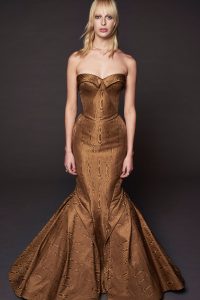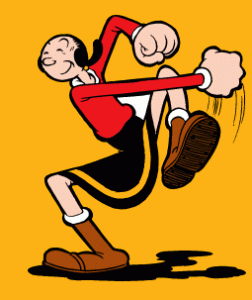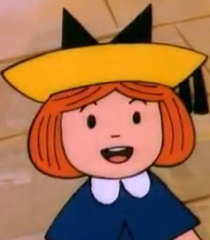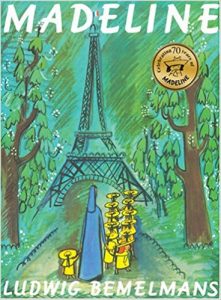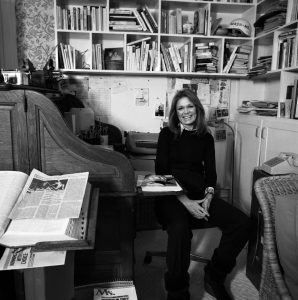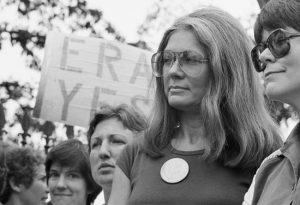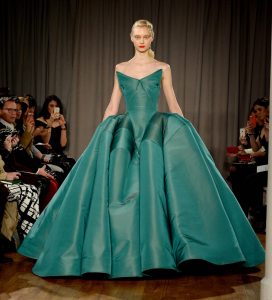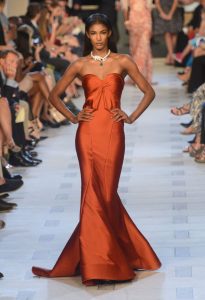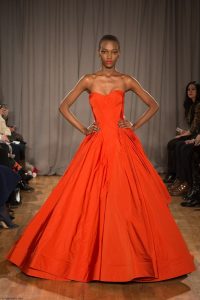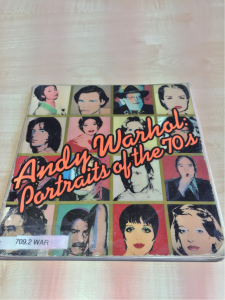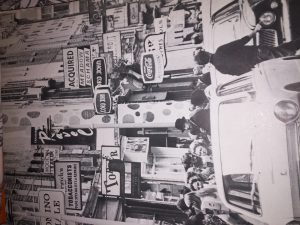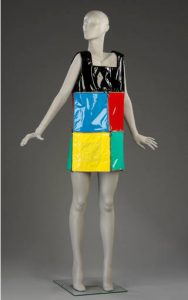During this semester, I have been set various tasks asking to complete a range of writing on different topics. I have found some quite difficult for example the reflective writing task as the academic writing was unlike anything I had read before. I am pleased with the way my tasks have turned out and I have tried my best to meet the criteria set. I feel I have learnt valuable skills from both our lectures and my writing. I would say that I am more interested in the practical side of this course but still find writing essays and doing tasks engaging, especially the way in which our lectures are conducted as they give us ample information and deliver it in a fun and interesting way, making me want to complete my work and meet the deadlines within the time. Looking back, I mostly completed all of my assignments on the week they were set, knowing that if I left them until the last minute I would have struggled writing them all in bulk. I could have improved upon finding a way to use the library in a more efficient way as I found it quite difficult to locate and match my ideas and concepts with books on the topic – for example in the reflective writing task I struggled to find a book that was relating to the original idea of taste being dependent on the person. I particularly enjoyed the ethics task, as it was very interesting to write on the topic of feminism, as I am familiar with this as I did Sociology a level. I found it interesting because the photographs were both very outrageous unlike any advertising I had seen before, making me want to look into the reasons why they had advertised in this way and what the reaction would be – most people find it shocking. I am certainly looking forward to next semester and the topics to come, however, I find essays quite challenging so may find it more difficult than this semester. Adjusting to writing again after the long summer holidays was quite a shock but did the best that I could. Moving forward, I could improve upon my writing by using more connectives and making my sentences more intellectual and degree level. I could use the skills that I have learnt in the future when referencing a photo or webpage in any jobs in the arts, this is bound to come up. The skills that I have learnt are; being able to use the technique of Harvard referencing, analysing the ideas and concepts behind an image, writing about one photograph or image for a length of time, breaking it down which will be useful in the industry depending on what part I wish to go into. For example, I could use it as a freelance designer for inspiration and explaining my ideas and concepts or doing this for a large company, working for multi-national companies like Next or Topshop.
Author Archives: Darcy Edwards
Tasks 9 and 10 Ethics
The ethical issues that need to be taken into consideration when looking at this Duncan Quinn image is masculine control and feminism. Masculine control shows the woman as being a sex slave/ object showing the woman as being subservient having the head brace/ lead as showing dominance and the woman is nothing compared to the man. This is also shown through costume – the man is fully and well dressed whereas the woman is only wearing underwear showing she is poor and the man controls what she wears going back to the sex slave – the woman is more accessible for him to use her if she is not fully dressed, however, this makes it to be more obvious of the man’s intentions to onlookers. This may be what he wants to portray his dominance and make him look manlier to other men. Women will not view the man as being this way; they will find him to be disgusting. Feminists would argue that men have done this emotionally and physically to women for years. This photograph is especially chilling because of the lead around the woman’s neck, which is the most vulnerable part of the human body and first port of call for a man to harm a woman. Ethically, I am surprised this photograph was released as it is very near the mark of what is allowed in the modern world. The mans suit indicates that this photograph is based in the nineteen twenties. It looks like she is lying on a car, which is mainly a male interest – motor racing and a general interest in cars. This photograph may show that in the twenties, the man was seen as the breadwinner of the family and woman seen as just a producer of children and to cater to the needs of the man. This gives the woman a lower status in the family and society as being a second-class citizen. The woman looks dead which may show that she is very tired and near to death after catering to the mans needs. The woman is looking at the man to possibly ask for the man’s permission to look at the camera – he is staring right at the camera with an angry look which also has a hint of happy he has the woman in this position. The fact that the photo is in black and white backs up the idea that this was set in the twenties and the woman’s style of underwear also shows this. The lead is the only thing connecting or separating the woman and the man. The way the woman is lying down suggests she is in pain with an arched back. “Men are afraid that women will laugh at them. Women are afraid that men will kill them.” Atwood, Margaret (Unkown) Telegraph date accessed 28/11/17. Women are seen to be vulnerable and less important than men because they have different body parts, which is not acceptable and I think this photograph is not seen as appropriate in this day and age.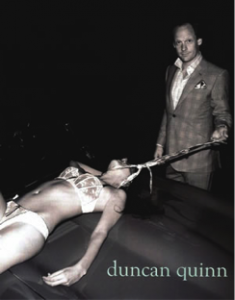
Task 7 and 8 Darcy Edwards
This extract is from Miller, S (2013) Fashion Media Past and Present, Bloomsbury. I think this extract is trying to say that the concept of taste depends on who is looking at the object – not everyone has the same taste. Fashion, taste and art are interchangeable because both fashion and art depend on taste. Meaning you could ask various people whether they like the same garment and you would get mixed reviews. This is where the saying “beauty is in the eyes of the beholder” comes from. I think this is right because we are all born different and from different places, which mean that, we are all brought up differently adjusting to different environments in different ways. For example, women will have interests that alter from those of men just from their bringing up and school environment. Children at young ages will be very influenced by their environment. “Aesthetic appreciation may be directed at a variety of natural and man made objects, perceived by any of the five senses” Sheppard, A (1987) Aesthetics An introduction to the philosophy of art”, Opus. This backs up my argument as aesthetic appreciation is looking at an object which sparks different emotions and feelings, art is a man made object and evokes different feelings from various people. I agree with the idea that fashion magazines are snapshots of cultural, social and a fashion of the time in which it was published as looking back now on magazines published these days compared to past ones as advertising is different and you can clearly see the main fashions of the time for example in the sixties they would always push bell bottoms saying they were current and up-to-date. I found this extract from Miller quite difficult to understand, as it was the first piece of academic writing I had read. However, once I looked over it a few times I understood it and began to process what I needed to think about in regard for my writing and thinking about finding a book that goes with the ideas I had gathered – fashion magazines showing that taste is a man made concept and has many depending factors such as where you were brought up and who you interact with at a young age. I also agree with the idea that fashion magazines brought about the idea of taste and how it differs between households, social class and location. This is because sociology would argue that at a young age, children are influenced by who they socialise with and their immediate family’s views so their taste could be influenced by this, therefore when these children grow up in all different locations they may have similar views and tastes but if they were to compare their views to someone who lives much further away it may be completely different. This may differ as the child grows up and move away from these people – forming their own opinions and making up their own minds. Overall, fashion magazines are very useful source of information to show the difference between the past and present in various ways such as fashion, culture, historical influences in fashion and the arts.
Task 5/6 Darcy Edwards
This is an image of the cartoon character Olive Oyl. This character is from Popeye, a well known cartoon created by Elzie Crisler Segar in the 1930s. I can see Zac Posen’s influences and inspiration through this cartoon as his work is quite cartoon-like and focused on main parts of the body such as knees, bust and waist that a cartoon would think about and use mostly. Women in cartoons are portrayed in a certain way to become more feminine in society’s eye. This is femininity is shown through Posen’s work in an extravagant, exaggerated way – for example shown in the teal garment the waist is very exaggerated and very much only for the runway yet still has an elegant, haute couture, expensive feel to it. Popeye himself is known for having large arm muscles, so exaggeration on Olive Oyl seems appropriate. Her arms and legs are very skinny which fits society’s culture at the moment – women having to be skinny in the right places to appear attractive to others. This in itself is unachievable for some women as they are just not made like that and celebrities that have the ideal figure in photographs are very likely to be photoshopped. Zac Posen’s work is influenced by feminists and this fits in with it nicely. This image shows Olive Oyl wearing all orange including a small hat which is quite iconic of the cartoon Popeye. Her hair is always in this style – slicked back in a small bun at the bottom. I picked Zac Posen because the links to his work were quite clear yet still needed to be thought about – feminism is now quite a generic idea/ concept but this has been done in an original way to hint at the idea but not showing it too publically/ obviously.
Darcy Edwards Task 3/4
Book:
Rosenblum R Andy Warhol: Portraits of the 70s (1979) USA Random House Inc.
Webpage:
Dolmetsch C & Kazakina K (2017) Major Warhol Collector says art stash being held hostage Bloomberg Persuits available from: https://www.bloomberg.com/news/articles/2017-10-23/big-warhol-collector-says-art-is-held-hostage-by-storage-firm accessed 25 October 2017
Newspaper Article:
O’Hagan S (2012) Jonas Mekas: the man who inspired Andy Warhol to make films The Guardian available from:
https://www.theguardian.com/film/2012/dec/01/jonas-mekas-avant-garde-film-interview accessed 25 october 2017
I picked 1970s Andy Warhol pop art because it was revolutionary for the time. I have looked into this before in my studies and thoroughly enjoyed it. This movement was all about using bold colors and abstracting shapes to make art become more conceptual. Lots of pop art was hugely influenced by celebrities and everyday objects from the time. Some of Andy Warhol’s most famous work includes Campbell’s soup cans and Triple Elvis. This movement – pop art has really influenced the way in which I think about different projects and my work in general – making me be more experimental with color and shape, not necessarily thinking exactly how something should look but being influenced by the seventies and sixties’ color palette and the way in which different artists see the same celebrities in different ways. I found a book, newspaper article and a webpage that all relates to this subject in a different way. This task has taught me how to reference all three of these things correctly.
1960s
I chose the 1960s because it is an interesting and bold age. It interests me to see the beginning of change socially and in fashion, using PVC and more other man made materials in garments. The library is a great resource available to me so I looked for and found a book on the nineteen-sixties, it inspired me because it relates to my current project and my past in fashion and textile design – at college I looked into the sixties and thoroughly enjoyed it. The first image that I chose was from ‘A fresh look at the Decade if Change by Francis Wheen The Sixties’. It shows a normal high street from the time, with various aspects of the decade showing including advertising, fashion and motorcars. I came to my decision on the PVC dress on the basis that there are bold shapes in the original photograph, which are replicated in this image of a garment made in the 1960s. The style of this dress and its manufacture was inspired by the ‘space age’ a popular movement of the time. Furthermore, women and men adopted the ‘wet look’ mainly garments and accessories made from plastic, man-made fabrics and materials. Women in the sixties looked up to celebrities’ style such as Doris Day, Marilyn Monroe and Audrey Hepburn in the media which was very influential to everyday fashion.
I feel the first image displays the many changes that happened in the sixties, women had more freedom, and different laws were introduced to give people more control of their own bodies, in turn, this was mirrored in fashion with influential characters like Mary Quant who introduced the mini skirt fitting in perfectly with society at this time. PVC seems to be held together with zips that may be a metaphor for how the different components of society fit together in different ways and how it can easily be unraveled at the pull of a string/ zip. Women’s fashion was mainly influenced throughout this time but men also had changes such as ties getting wider and collars longer. Men’s general look was more relaxed because of their long hair influenced by The Beatles. Some men stuck with suits similar to those worn in the fifties, which was older men. There was a major European influence in the sixties for men’s fashion, including tassels, and the hippie movement. Overall, I think my choices in photograph and garment go together well as I can clearly see the connection between the two.
Unkown photographer, The Sixties by Francis Wheen
PVC optical shift dress, Stephen Willats, 1965, UK. Museum no. T.19-1991. Victoria and Albert Museum, London

